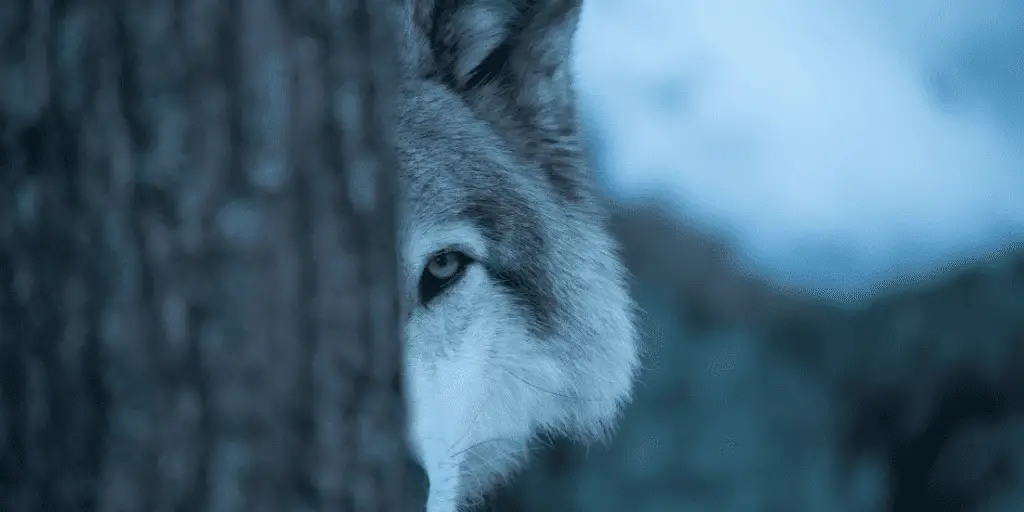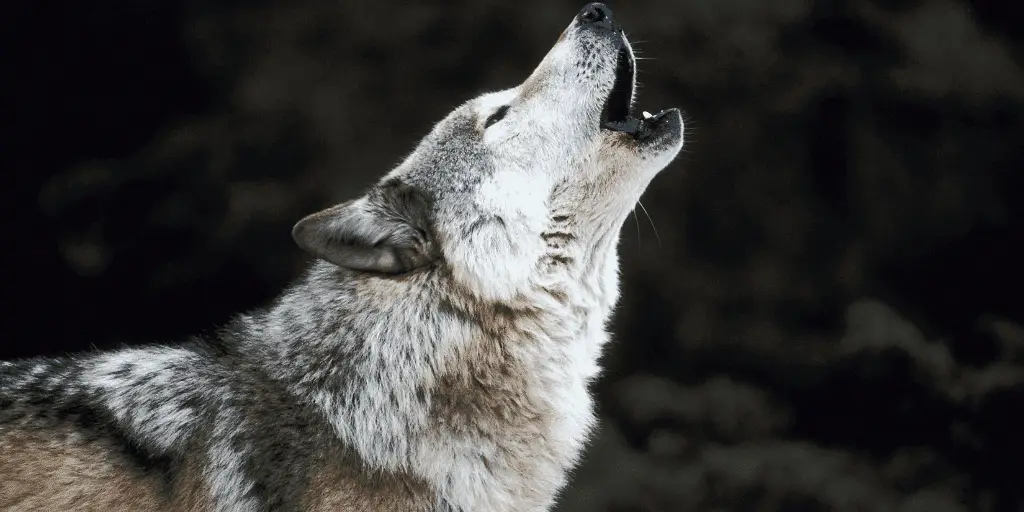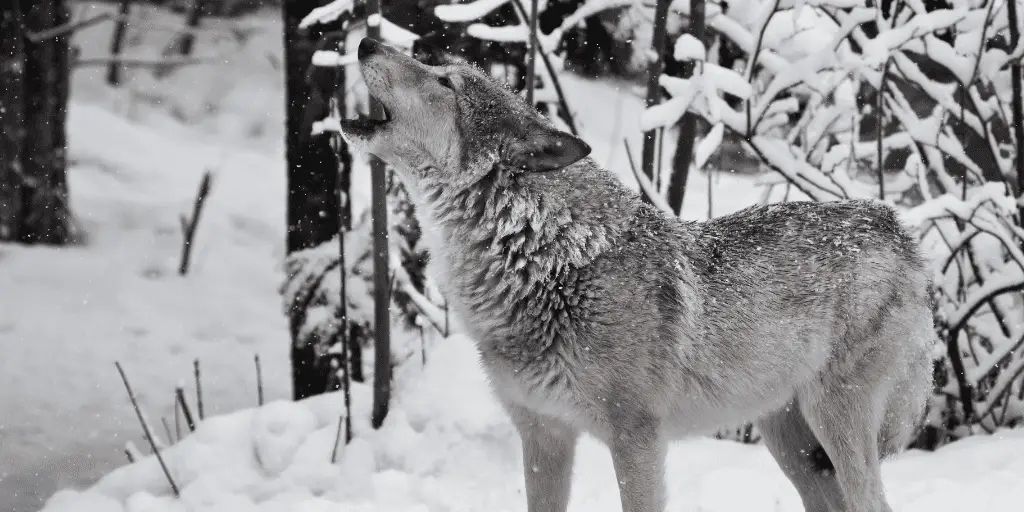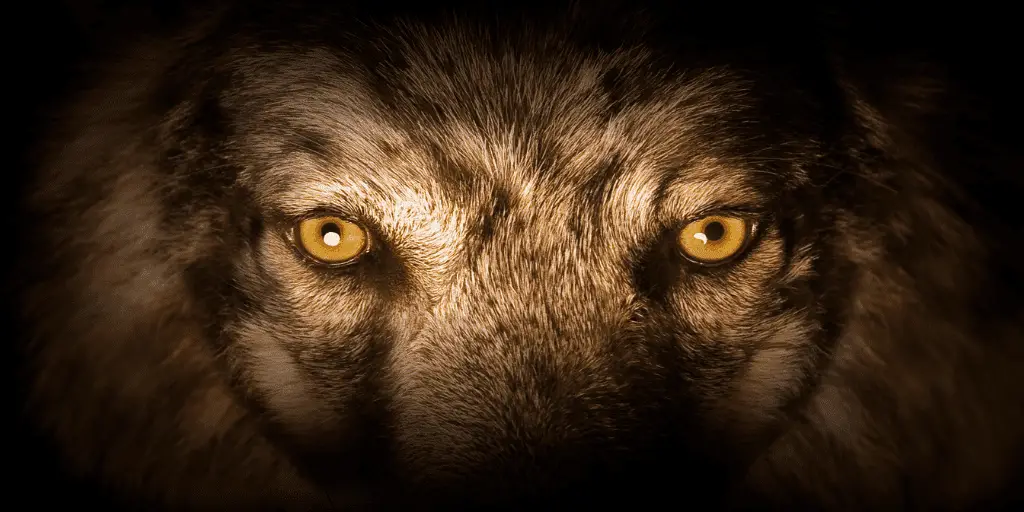Wolves, majestic and misunderstood, vary dramatically in size—a factor crucial to their survival. Discover the astonishing spectrum from the compact Arabian wolf to the towering Mackenzie Valley giant, and learn how diet, environment, and human impact shape their world. This article unveils the intricate tapestry of wolf sizes, offering insights that challenge myths and inform conservation.
Key Takeaways:
- Wolf size varies significantly due to factors such as genetics, environmental conditions, and prey availability, with larger wolves found in colder climates and areas with bigger prey.
- The Arabian wolf is one of the smallest subspecies, adapted to hot, arid environments with a diet of smaller prey, while the Mackenzie Valley wolf is one of the largest, thriving in the cold Arctic with a diet of large ungulates.
- Wolves exhibit a wide range of sizes, with the average gray wolf measuring 4.5 to 6.5 feet in length, 26 to 32 inches in height at the shoulder, and weighing between 40 to 175 pounds.
- Wolves and domestic dogs share a common ancestor, with some dog breeds like the Siberian Husky and Alaskan Malamute resembling wolves in build and appearance, while others like the Great Dane can surpass wolves in height.
- The size of wolves compared to other apex predators like lions and tigers is smaller, reflecting their reliance on pack hunting strategies, while their size compared to other canids like coyotes and foxes is larger, influencing their hunting tactics and social dynamics.
Comparative Analysis of Wolves Size Comparison
Wolves vary in size based on genetics, environment, and diet, with weights ranging from 40 to 175 pounds and lengths up to 6.5 feet.
| Aspect | Details |
| Factors Influencing Size | – Genetics, environment, and prey availability determine wolf size. Larger wolves in colder climates due to Bergmann’s rule. |
| Measuring Wolf Size | – Length: 4.5 to 6.5 feet; Height: 26 to 32 inches at the shoulder; Weight: 40 to 175 pounds. |
| Diet’s Role in Size | – Diet varies with prey size; larger prey supports larger wolf size. |
| Smallest Subspecies | – Arabian Wolf: Adapted to hot, arid environments; typically weighs 40 to 45 pounds. |
| Largest Subspecies | – Mackenzie Valley Wolf: One of the largest, thriving in cold climates; weights 130 to 150 pounds. |
| Comparison with Domestic Dogs | – Genetic relationship; breeds like Siberian Husky and Alaskan Malamute resemble wolves. Great Dane can surpass wolves in height. |
| Wolf-Dog Hybrids | – Hybrid size varies; presents challenges in conservation and identification. |
| Comparison with Humans | – Wolves are shorter than humans on average but can weigh as much or more than the average adult human. |
| Comparison with Big Cats | – Wolves are smaller than lions and tigers; rely on pack hunting strategies. |
| Comparison with Other Canids | – Larger than coyotes and foxes; size influences hunting tactics and social dynamics. |
| Prehistoric Dire Wolf | – Larger and stronger than modern wolves; weighed around 130 to 150 pounds. Extinct approximately 10,000 years ago. |
| Conservation Challenges | – Habitat loss, human-wildlife conflict, and declining prey populations pose risks to wolves. |
| Ecological Role and Size | – Size influences wolf’s hunting behavior, social structure, and territorial range. |
Understanding Wolf Size: An Overview

Factors Influencing Wolf Size
When it comes to understanding the size of wolves, it’s a bit like piecing together a jigsaw puzzle where each piece represents a different factor. Genetics lay the foundation, as they pass down traits from one generation to the next, setting the stage for potential size.
But the environment plays a crucial role too. For instance, wolves living in the frigid expanses of the Arctic are often bulkier than their cousins in more temperate zones. This isn’t a coincidence; it’s an example of Bergmann’s rule in action, where the body mass of animals increases with latitude to help conserve heat.
But it’s not just the cold that can bulk up a wolf. The availability of prey also matters. In regions where larger ungulates roam, wolves have adapted to take down these heftier meals, and over time, they’ve grown to match the challenge.
On the flip side, human activities have reshaped ecosystems, sometimes reducing the size of wolves’ hunting grounds and prey, which can lead to smaller wolf populations over time.
Measuring Wolf Size: Length, Height, and Weight
To get a real sense of how big a wolf is, three key measurements are taken into account: the length from nose to tail tip, the height at the shoulder, and the overall weight. These metrics are more than just numbers; they tell a story about the wolf’s health, age, and even its subspecies.
For example, the average length of a gray wolf can range from 4.5 to 6.5 feet, while their shoulder height can vary from 26 to 32 inches. As for weight, it’s a wide range, with some adults tipping the scales at a lean 40 pounds and others a robust 175 pounds.
The Role of Diet in Wolf Size
A wolf’s diet is like the fuel for its growth engine. In regions where bison or moose are on the menu, wolves have the opportunity to grow larger and stronger, thanks to the rich nutritional bounty these large prey provide.
But it’s not just about what’s available; it’s also about what wolves can catch. In areas where smaller prey is the norm, wolves may be smaller, not necessarily due to a lack of nutrition, but because their hunting strategies and physical adaptations are tuned for speed and agility rather than brute strength.
This incredible adaptability has allowed wolves to thrive in diverse habitats, with their size reflecting the unique challenges and opportunities of their environment.
The Smallest and Largest: A Size Spectrum
The Arabian Wolf: A Compact Survivor
In the arid and semi-arid regions of the Middle East, the Arabian wolf stands as a testament to nature’s adaptability. This wolf is notably smaller than its global kin, with a slender build that’s not just a quirk of genetics but a crucial adaptation.
The lean frame of the Arabian wolf, with its shorter fur and reduced body mass, is nature’s way of equipping it for the scorching heat, allowing for more efficient heat dissipation. Typically weighing between 40 to 45 pounds, it’s a compact survivor in a harsh landscape.
The Arabian wolf’s diet is as adaptable as its physique, consisting of small to medium-sized prey, including rodents, hares, and even carrion. It’s a creature of opportunity, making the most of its environment.
Socially, these wolves form smaller packs than their larger relatives, often consisting of a breeding pair and their offspring, a structure that is likely a response to the limited resources of their habitat.
However, the Arabian wolf’s existence is fraught with challenges. Habitat loss and human conflict are constant threats, and the wolf’s presence in local folklore often paints it as a villain, further complicating conservation efforts. Despite this, the Arabian wolf plays a crucial role in its ecosystem, managing populations of smaller animals and thus maintaining the delicate balance of its environment.
The Mackenzie Valley Wolf: A Giant of the North

Venture to the Canadian Arctic and Northwestern America, and you may encounter the Mackenzie Valley wolf, a giant among wolves.
One of the largest subspecies, these wolves can weigh a staggering 130 to 150 pounds, with powerful limbs and a thick coat to withstand the frigid climate. Their size is not just for show; it’s a critical factor in their survival, enabling them to take down large ungulates like moose and caribou.
The Mackenzie Valley wolf’s habitat range is vast, reflecting its need for large territories to support its hunting lifestyle. As a keystone predator, its presence is vital to the health of the ecosystem, regulating prey populations and influencing the broader biodiversity of the region. Their social behavior is complex, with pack hierarchies that facilitate coordinated hunting strategies and territorial defense.
Yet, the very size that gives the Mackenzie Valley wolf its edge also presents challenges. Climate change and human encroachment are altering its habitat, and the wolf’s reliance on large prey makes it vulnerable to changes in those populations. As the Arctic environment faces unprecedented shifts, the future of this majestic predator hangs in the balance.
Size Comparison Within the Wolf Family
Wolves come in a remarkable variety of sizes, each adapted to its unique environment. A visual and textual comparison of these canines reveals a fascinating spectrum.
On one end, the Arabian wolf’s diminutive stature is a stark contrast to the robust Mackenzie Valley wolf. Charts and infographics bring this size disparity to life, showing not just the difference in weight and height, but also in paw size and tooth structure.
This diversity is the result of evolutionary pressures and environmental demands. Size influences not only the wolf’s hunting strategies—smaller wolves targeting quicker, smaller prey, and larger wolves taking on formidable ungulates—but also their social dynamics.
Larger wolves often form more extensive packs, a necessity for bringing down big game, while smaller wolves may operate in pairs or small groups.
Understanding the size differences within the wolf family offers insight into how each species has carved out its niche. It’s a reminder of the adaptability of these creatures and how each has been molded by the world it inhabits to ensure its survival and the continuation of the species.
Wolf Size Compared to Dogs

Genetic Cousins: Wolves and Domestic Dogs
Wolves and domestic dogs share a fascinating genetic relationship, tracing back to a common ancestor. This lineage reveals a journey from the wild forests to the cozy corners of human homes.
While wolves have remained untamed, embodying the spirit of the wilderness, dogs have undergone significant changes through selective breeding.
Breeds like the Siberian Husky and the Alaskan Malamute mirror their wolf ancestors not just in their plush coats and piercing eyes but also in their sturdy build. These breeds serve as a living window into the past, showing us what traits were necessary for survival in the wild.
For dog owners and wildlife enthusiasts alike, understanding these genetic ties is crucial, as it sheds light on the instincts and needs of these animals, guiding better care and deeper appreciation.
The Great Dane vs. The Wolf: A Size Showdown
When it comes to size, the Great Dane stands tall as one of the most imposing dog breeds, often towering over others at an average height of 28 to 34 inches at the shoulder. In contrast, the gray wolf, the largest member of the Canidae family in the wild, typically measures 26 to 32 inches at the shoulder.
While the Great Dane can weigh anywhere from 110 to 175 pounds, a gray wolf’s weight ranges from 70 to 145 pounds. Despite their similar stature, the roles they have played alongside humans differ vastly, with Great Danes being gentle giants in family settings and wolves maintaining their status as elusive predators.
The Great Dane’s demeanor is a testament to how domestication can soften even the most formidable creatures, a stark contrast to the independent and survival-driven nature of wolves.
Wolf-Dog Hybrids: Blurring the Lines Between Wild and Domestic
Wolf-dog hybrids stand at the crossroads of domestication and wild instinct, embodying traits from both worlds. Their size can be as unpredictable as their behavior, with some hybrids resembling a medium-sized dog and others standing as tall and robust as a wolf.
The ownership of these majestic creatures comes with a unique set of challenges and responsibilities, often requiring a deep understanding of both wild and domestic animal behavior. Legal and ethical considerations also come into play, as their strength and size can make them formidable pets.
Experts often weigh in on the temperament of wolf-dog hybrids, noting that their wolf heritage can lead to a more complex and unpredictable nature, which potential owners must be prepared to handle with patience and expertise.
Wolf and Human: A Comparative Analysis

The Physical Stature of Wolves vs. Humans
When you stand next to a wolf, the size difference is immediately apparent. On average, adult wolves measure about 26 to 32 inches at the shoulder, which means if they were to stand on their hind legs, they would be nearly as tall as a human.
However, they typically weigh less than the average adult human, with their weight ranging from 50 to 100 pounds, while an adult human male can average around 195.7 pounds.
Visual aids, such as size charts and photographs, often depict wolves as towering, muscular creatures, which isn’t far from the truth. Their robust build and large paws are a testament to their adaptability in the wild.
Historically, the formidable size and strength of wolves have cemented their status in human mythology and folklore. They’ve been both revered and feared, often portrayed as symbols of wilderness and freedom, as well as cunning predators.
This perception has been shaped by their physical dimensions, which have enabled them to be successful hunters and survive in diverse environments.
Coexistence and Conflict: The Impact of Size Perception
The perception of wolves as large and powerful predators has significantly influenced human attitudes towards them. In ancient cultures, wolves were often associated with fear and reverence, seen as both spiritual guides and threats to human safety.
In modern times, this perception has evolved but still plays a role in wildlife management and conservation efforts. Case studies of human-wolf interactions show that size and strength can be pivotal in conflicts. For instance, larger wolf packs can intimidate livestock owners due to the potential threat they pose.
Conversely, there are successful examples of coexistence where communities understand the behavior of wolves and implement strategies that respect their physical capabilities, such as the use of guard animals or protective fencing.
Conservation Implications: Understanding Wolf Behavior Through Size
Grasping the size and behavior of wolves is vital for their conservation and management. Knowing how large a wolf can grow helps in designing reserves and protected areas that provide sufficient space for these animals to thrive.
It also aids in crafting educational programs that inform the public about the true nature of wolves, dispelling myths that may lead to unnecessary fear or conflict.
Initiatives that consider wolf size and behavior data contribute to the development of non-lethal control methods and foster a balanced ecosystem where wolves can fulfill their role as apex predators. Such efforts ensure that wolves can coexist peacefully with human populations, maintaining the delicate balance between wildlife and human interests.
Wolves and Big Cats: A Size Perspective

Apex Predators in Comparison: Wolves vs. Lions and Tigers
When you picture a wolf, you might imagine a creature of strength and agility, but how does it stack up against the kings of the jungle, the lions, and the stealthy tigers? Wolves, with an average length of 4 to 6.5 feet from nose to tail tip and a weight that can range from 40 to 175 pounds, are impressive predators.
However, lions and tigers are in a different league size-wise, with lions weighing in at 330 to 570 pounds and tigers tipping the scales at a hefty 200 to 670 pounds.
This size difference isn’t just for show; it plays a crucial role in their ecological niches. Wolves, with their smaller size, rely on their pack structure to hunt and take down prey.
This social hunting strategy allows them to tackle animals much larger than themselves. In contrast, the solitary tiger and the pride-oriented lion use their size and strength to overpower prey, often hunting alone or with a coordinated group in the case of lions.
The size of these apex predators also reflects their position in the food chain. Larger size means lions and tigers can claim the top spot with fewer natural threats, while wolves, although still apex predators, face competition from bears and humans.
Territorial Ranges and Prey Size: The Influence of Predator Size
The vast territories that wolves, lions, and tigers patrol are a testament to their size and energy needs. A wolf pack may roam an area of 50 to 1,000 square miles, depending on prey availability and pack size.
Lions and tigers have been known to cover even larger territories, up to 100 square miles for a lion and an astonishing 4,000 square miles for a solitary tiger.
These large territories are necessary to support the energy requirements of such formidable predators. The larger the predator, the larger the prey they typically pursue. Wolves often hunt elk, deer, and moose, while lions may target zebras and wildebeests, and tigers can take down prey as large as buffalo and even young elephants.
The size of these predators not only dictates their hunting behavior but also impacts the ecosystem. Their choice of prey influences the population dynamics of these species and can affect the structure of the community as a whole, including vegetation patterns influenced by grazing.
Conservation Challenges Facing Large Predators
The grandeur of large predators like wolves, lions, and tigers comes with a set of conservation challenges. Their size requires extensive habitats, which are increasingly fragmented by human development. This habitat loss, coupled with human-wildlife conflict and declining prey populations, puts these animals at risk.
Large predators need large territories, which often leads to them wandering into human-populated areas, resulting in conflict. Moreover, their substantial dietary needs mean that a decline in prey populations can have a significant impact on their survival.
Conservationists are working tirelessly to protect these majestic creatures through initiatives like establishing wildlife corridors, enforcing anti-poaching laws, and engaging in community-based conservation efforts.
Scientific research plays a pivotal role in understanding the complex needs of these animals, informing strategies that aim to preserve the delicate balance of ecosystems where these large predators reign supreme.
Wolves and Other Canids: Size Matters
Coyotes and Foxes: A Comparison with Wolves
When you look at the animal kingdom, size often has a big say in who gets to eat and who gets eaten, who leads and who follows. Take wolves, coyotes, and foxes, for instance. Wolves are the heavyweights among these relatives, with some males tipping the scales at up to 130 pounds and standing around 32 inches at the shoulder.
Coyotes are the middleweights, generally maxing out at about 50 pounds and 24 inches tall. Foxes, like the red fox, are the lightweights, rarely exceeding 15 pounds and 16 inches in height.
These size differences aren’t just for show; they’re deeply connected to each animal’s way of life. Wolves, with their larger frames, are built for taking down big prey like deer and elk. They roam vast territories and rely on the strength of the pack to survive.
Coyotes, smaller and more solitary, are opportunistic feeders that will hunt smaller mammals and aren’t above scavenging. Foxes, with their petite size, are even more versatile, hunting rodents and birds, and using their agility to navigate diverse habitats from forests to urban areas.
Size also shapes social dynamics. Wolves form complex social structures, with clear hierarchies that are often influenced by size and strength. Coyotes and foxes, while they may form pairs or small family groups, don’t have the same level of social organization, partly because they don’t need the collective might that wolves rely on to bring down large prey.
The Role of Size in Canid Social Hierarchies
In the world of canids, size isn’t just a number—it’s a ticket to the top. Within wolf packs, the largest and strongest individuals often ascend to the alpha status, leading the group and making critical decisions. This isn’t just about brute force; it’s about the ability to contribute to the pack’s success in hunting and defending territory.
But what happens when different canid species cross paths? Here, size can be a deciding factor in who claims the choicest hunting grounds and who gets pushed to the margins.
Wolves, with their larger size, typically hold sway over coyotes and foxes, driving them away from prime territories. However, it’s not always about conflict; sometimes, these species coexist by carving out different ecological niches that suit their size and abilities.
Hybridization and Size Variability Among Canids
Nature doesn’t always play by the rules, and in the case of canids, the lines can get a bit blurred. Hybridization—when different species interbreed—can throw a wrench in the works of size predictability. Wolf-coyote hybrids, known as coywolves, and wolf-dog mixes are examples where size can vary widely, often landing somewhere between the parent species.
This mingling of genes can have far-reaching effects. For one, it can make conservation efforts tricky, as identifying and preserving purebred populations becomes more challenging.
Hybrid offspring may display a range of sizes and traits that are not typical of either parent species, potentially altering the dynamics of local ecosystems. For instance, a larger coywolf may be able to hunt bigger prey and compete more directly with wolves, reshaping the traditional roles within the canid community.
The Prehistoric Dire Wolf: A Giant Among Wolves

Unveiling the Dire Wolf: Size and Physical Characteristics
The dire wolf, an emblem of prehistoric might, once roamed the lands with a presence that commanded respect. Paleontological findings paint a picture of a creature both formidable and fascinating.
Larger than the modern gray wolf, the dire wolf (Canis dirus) boasted a robust frame, with estimates suggesting an average weight of around 130 to 150 pounds. Its powerful jaws and enlarged teeth were adaptations that made it an apex predator, capable of taking down large prey with efficiency during the Pleistocene epoch.
The dire wolf’s size and physical prowess placed it at a unique position within the ecosystem, where it interacted with other megafauna such as mammoths and giant ground sloths. Its ecological role was that of a specialized carnivore, with a body built for endurance and strength rather than speed, setting it apart from its contemporaries and modern relatives.
Myth vs. Reality: The Dire Wolf in Popular Culture
In the realm of popular culture, the dire wolf has been immortalized as a creature of legend and fantasy. Television series like “Game of Thrones” have introduced the dire wolf to a broad audience, often depicting it as a loyal and powerful companion. However, these portrayals tend to blur the lines between fiction and the actual prehistoric canid.
The reality of the dire wolf is grounded in scientific evidence, which often contradicts the exaggerated size and mystical attributes ascribed to it in myths. Understanding the distinction between these dramatized representations and the dire wolf’s true nature is crucial for appreciating the animal’s place in natural history and the scientific insights it provides.
Extinction and Legacy: The End of the Dire Wolf Era
The dire wolf’s reign came to an end approximately 10,000 years ago, with factors such as climate change, habitat alterations, and competition with other predators like the smaller but more adaptable gray wolf contributing to its demise.
The loss of large herbivores, which constituted the dire wolf’s primary food source, further exacerbated its extinction.
The legacy of the dire wolf endures through its fossilized remains, offering a window into the life and challenges of Pleistocene megafauna. Its extinction serves as a poignant reminder of the delicate balance within ecosystems and the impact environmental shifts can have on apex predators.
Studying the dire wolf also enriches our understanding of canid evolution and underscores the ongoing need to preserve the habitats of their modern-day descendants.
Wolves and Other Canids: Size Matters

Coyotes and Foxes: A Comparison with Wolves
When it comes to the canid family, wolves stand out for their size. On average, a gray wolf can weigh between 80 to 145 pounds, with a body length that can reach up to 6.5 feet from nose to tail tip.
In contrast, coyotes are smaller, with an average weight of 20 to 50 pounds and a length of about 4 to 5 feet. Foxes, such as the red fox, are even more diminutive, typically weighing in at a mere 10 to 15 pounds with a length of 3 to 3.5 feet.
These size differences are not just numbers; they play a crucial role in each species’ survival playbook. Wolves, with their larger frames, are equipped to take down bigger prey and often hunt in packs to tackle animals like elk or deer.
Coyotes, being smaller, are more solitary hunters, often targeting rodents and small mammals, which require less cooperation and brute force. Foxes, the smallest of the trio, rely on their agility and cunning to catch a variety of prey, from rabbits to birds.
The habitats these canids prefer also relate to their sizes. Wolves need large territories to support their hunting lifestyle, while coyotes and foxes can adapt to a range of environments, from urban fringes to dense forests. The ecological niches they fill are a testament to how size has influenced their evolution, with each species carving out a space where their particular set of physical attributes gives them an advantage.
The Role of Size in Canid Social Hierarchies
In the world of wolves, size is a significant factor in determining an individual’s place in the pack hierarchy. Larger wolves often command more respect and can assert dominance, which can lead to better mating prospects and priority access to food. This size-based ranking system is less pronounced in coyotes and foxes, which tend to have more fluid social structures.
The social dynamics of these canids have far-reaching implications, especially when considering conservation and wildlife management. Human interference, such as habitat destruction and hunting, can disrupt these natural hierarchies, leading to unforeseen consequences in canid behavior and population dynamics.
Hybridization and Size Variability Among Canids
Hybridization among canids introduces a fascinating twist to the tale of size. Wolves mating with coyotes produce offspring known as coywolves, which exhibit a range of sizes and traits from both parents. Similarly, wolf-dog hybrids can vary greatly in size, depending on the breeds involved in the cross.
These hybrids present unique challenges for conservationists and wildlife managers. Identifying and classifying hybrids can be difficult, and their presence in the wild can complicate efforts to preserve the genetic integrity of species.
As habitats overlap and canids come into closer contact with each other and with domestic dogs, the potential for hybridization increases, raising questions about the future of these species and the need for strategies to manage their populations effectively.
Conclusion
In conclusion, the size of wolves varies significantly across different species and is influenced by a range of factors including genetics, environment, prey availability, and human activity. From the compact Arabian wolf, adapted to arid climates, to the massive Mackenzie Valley wolf of the Arctic, each subspecies has evolved to thrive in its unique habitat.
Diet plays a crucial role in determining wolf size, with larger prey supporting the growth of larger wolves. Comparisons with domestic dogs, such as the Great Dane, and other canids like coyotes and foxes, highlight the diversity within the Canidae family.
The article also touches on the historical and cultural significance of wolves, their comparison with other large predators like lions and tigers, and the conservation challenges they face.
Understanding the size of wolves not only sheds light on their behavior and social dynamics but also informs conservation efforts to ensure their survival in the wild.
- What Should I Do If A Koala Bites Me? Safety Guide - 2024-05-30
- Are Kangaroos Born Without Hind Legs? A Fascinating Journey - 2024-05-30
- Animals That Look Like Squirrels - 2024-05-30









